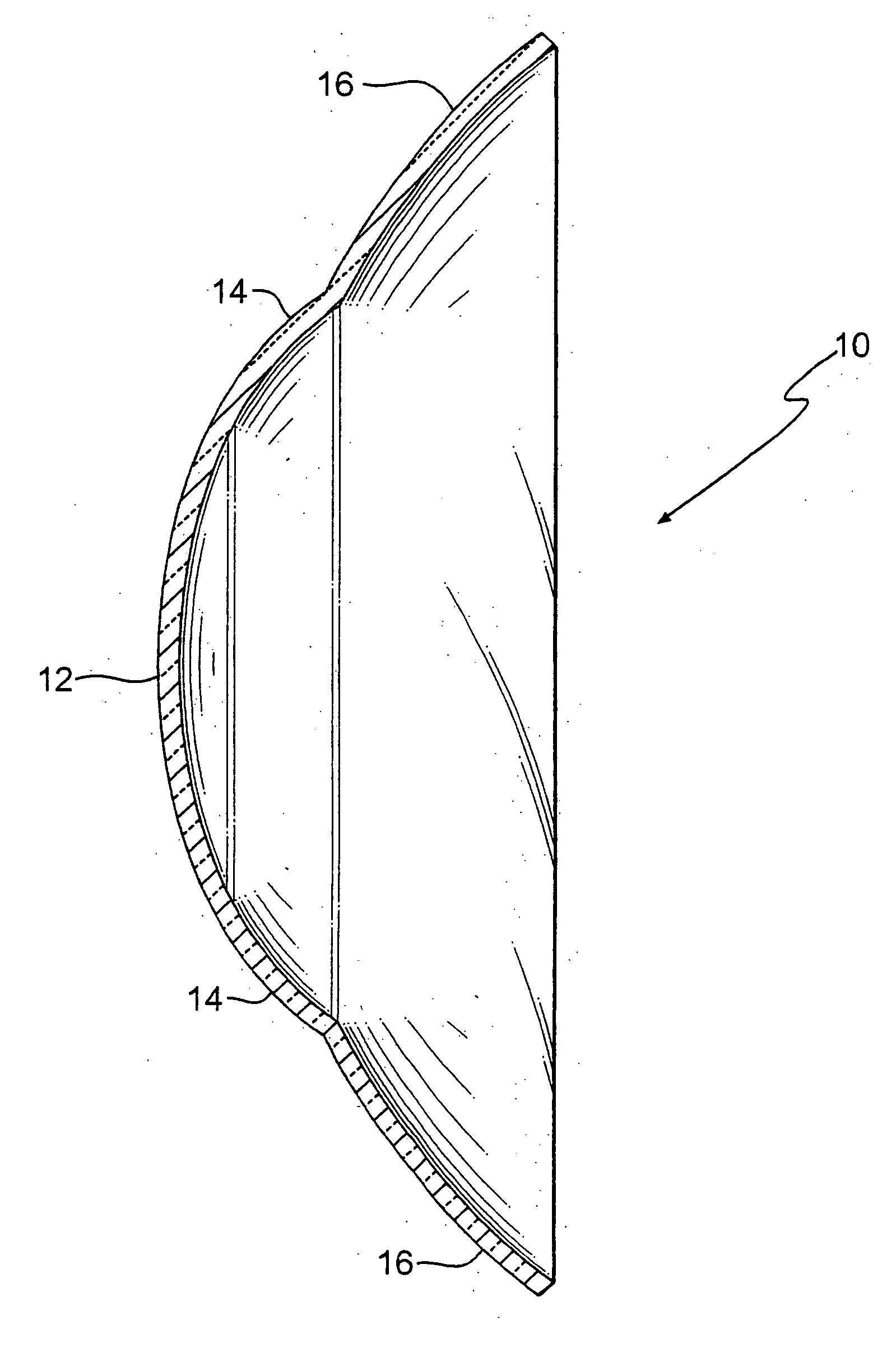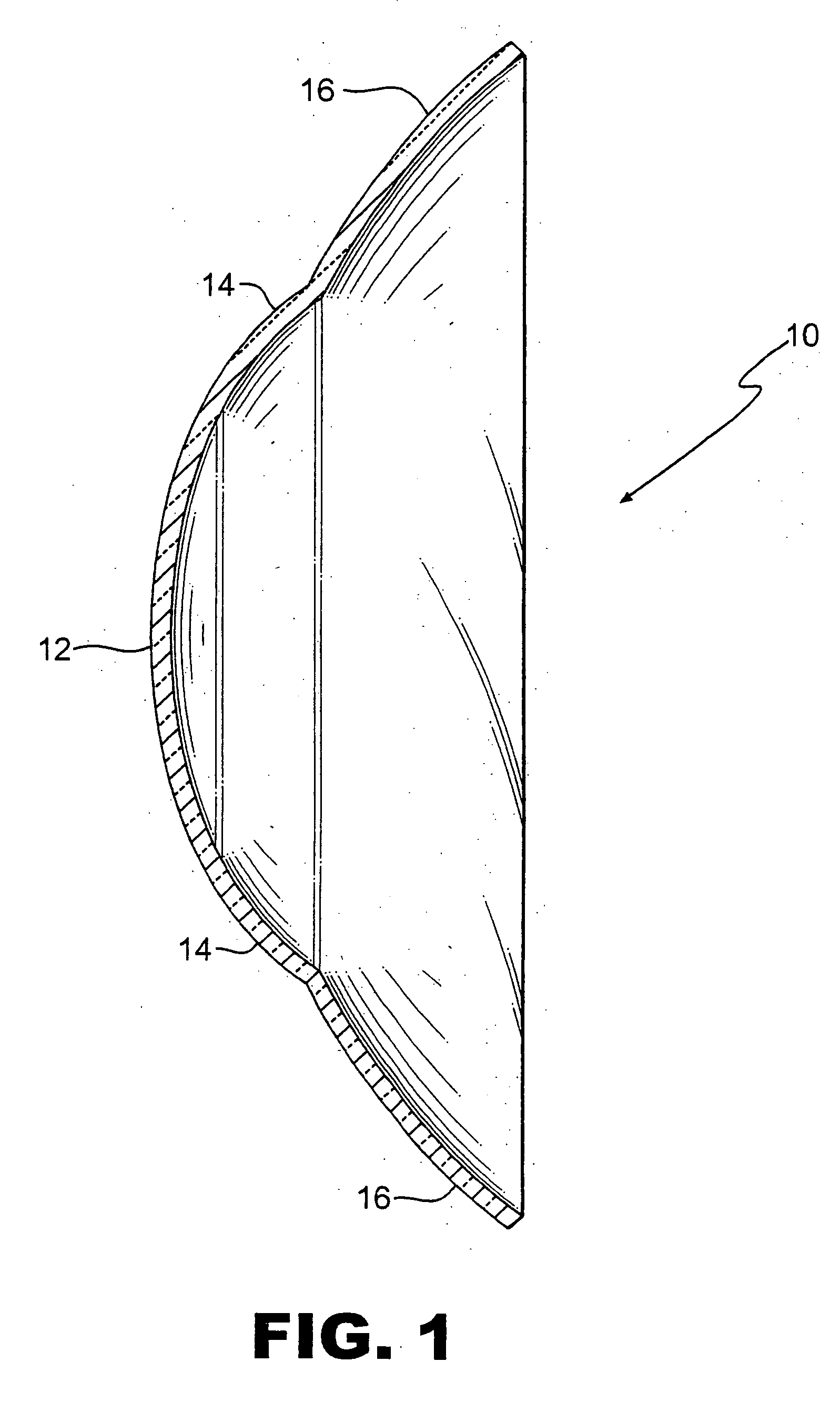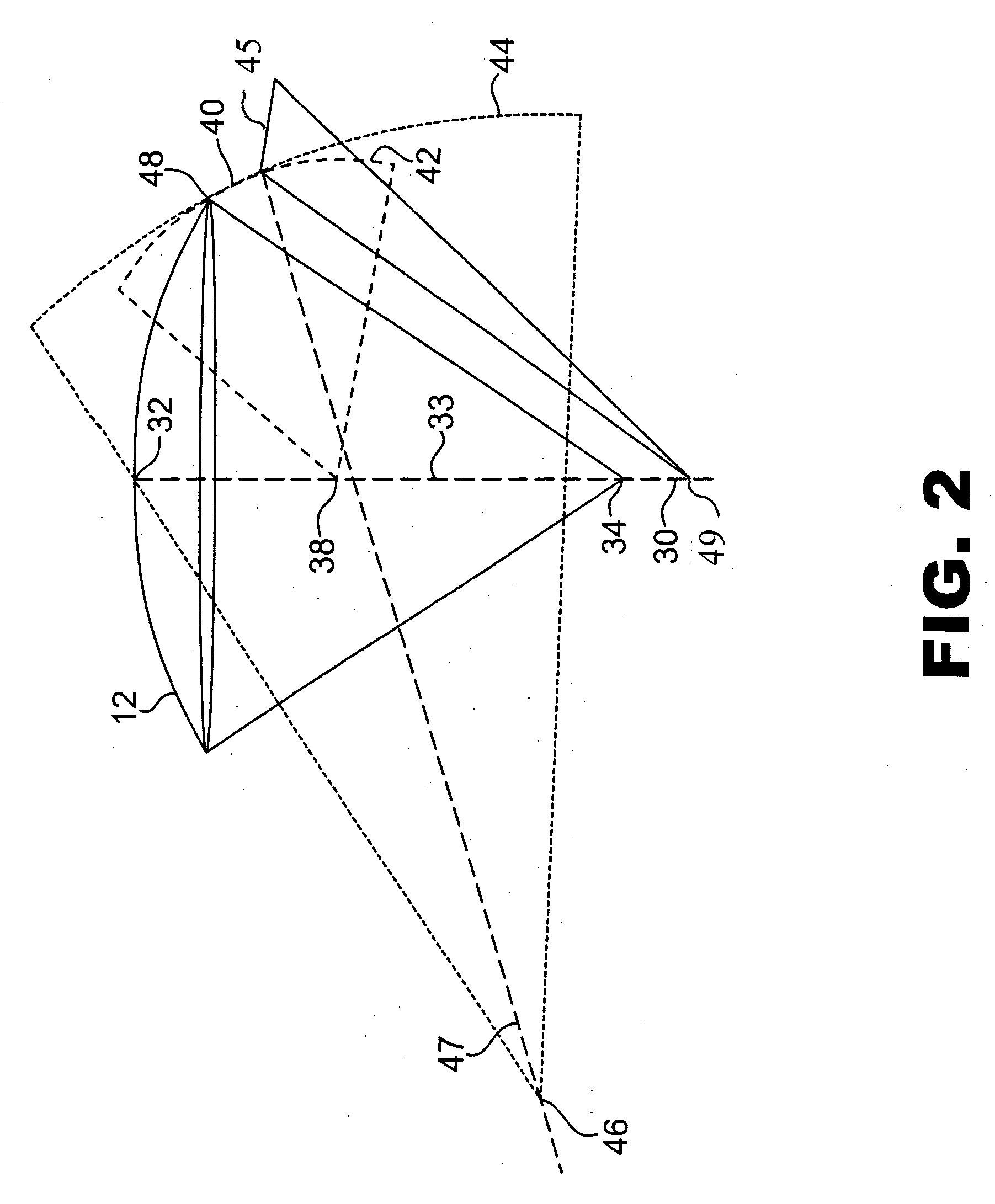Contact lens and methods of manufacture
a technology of contact lenses and manufacturing methods, applied in the field of contact lenses and methods of manufacture, can solve the problems of requiring an extensive period of time for reshaping the cornea, carries the risk of both the procedure itself and post-surgical complications, and complicates the general use of such procedures
- Summary
- Abstract
- Description
- Claims
- Application Information
AI Technical Summary
Benefits of technology
Problems solved by technology
Method used
Image
Examples
Embodiment Construction
[0014] A preferred corneal contact lens in accordance with an embodiment of the present invention is shown generally at 10 in FIG. 1. The lens 10 includes a central zone 12, at least a first annular or connecting zone 14, and at least one peripheral zone 16. The overall dimensions of the lens 10 are within the normal ranges for corneal contact lenses. The outside diameter of the lens 10 is typically between 5 to 20 millimeters with other diameters being possible. The lens may have a lateral or cross-sectional thickness of between about 0.05 millimeters to 10 millimeters. Thicknesses in the range of 0.05 to 0.5 millimeters are preferred.
[0015] In the example shown in FIG. 1, the surface has a first curvature, which may be spherical and defined as having a radius of curvature. Alternatively, the central zone 12 could be aspherical, toric, or comprised of a combination of annular spherical and / or aspherical zones. In the embodiment shown, the radius of curvature of the central zone 12...
PUM
 Login to View More
Login to View More Abstract
Description
Claims
Application Information
 Login to View More
Login to View More - R&D
- Intellectual Property
- Life Sciences
- Materials
- Tech Scout
- Unparalleled Data Quality
- Higher Quality Content
- 60% Fewer Hallucinations
Browse by: Latest US Patents, China's latest patents, Technical Efficacy Thesaurus, Application Domain, Technology Topic, Popular Technical Reports.
© 2025 PatSnap. All rights reserved.Legal|Privacy policy|Modern Slavery Act Transparency Statement|Sitemap|About US| Contact US: help@patsnap.com



